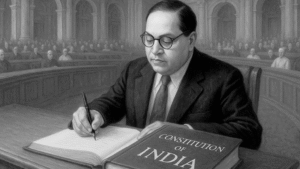Delhi’s Air Quality Improvement: A Breath of Fresh Air After Five Years
Introduction
Delhi, infamous for its hazardous air quality, has finally witnessed a positive change. For the first time in five years, the city recorded ‘satisfactory’ air quality levels in March. This remarkable improvement is being credited to a combination of favorable meteorological conditions and strict pollution control measures enforced by the authorities.
Citizens have welcomed this development, with many reporting clearer skies, reduced smog, and fewer respiratory issues. In this blog, we will explore the factors contributing to this improvement, its impact on public health, and how Delhi can sustain this progress in the future.
Delhi’s Air Pollution Crisis: A Background
Delhi has long struggled with severe air pollution, primarily caused by:
- Vehicular emissions
- Construction dust
- Industrial pollution
- Crop burning in neighboring states
- Weather conditions trapping pollutants
The Air Quality Index (AQI) in Delhi often reaches ‘severe’ levels, leading to health concerns, school closures, and government interventions.
What is the Air Quality Index (AQI)?
AQI is a measure of air pollution levels based on particulate matter (PM2.5 & PM10), nitrogen dioxide (NO2), sulfur dioxide (SO2), carbon monoxide (CO), and ozone (O3).
The AQI categories are:
- 0-50: Good
- 51-100: Satisfactory
- 101-200: Moderate
- 201-300: Poor
- 301-400: Very Poor
- 401-500: Severe
For the first time in five years, Delhi recorded AQI within the ‘satisfactory’ range, marking a significant improvement.
Factors Behind Delhi’s Air Quality Improvement
Several factors have contributed to this unexpected but welcome relief:
1. Favorable Weather Conditions
This year, strong winds, higher humidity, and intermittent rainfall helped in dispersing pollutants. The natural cleansing effect reduced the concentration of fine particulate matter in the air.
2. Government Initiatives and Policy Changes
The Delhi government and central authorities have implemented several pollution control measures, including:
- Expansion of the Smog Tower Project: Advanced air filtration systems installed at key locations.
- Odd-Even Vehicle Rule: Restricted vehicle movement on alternate days.
- Ban on Firecrackers: Reduced emissions during festivals.
- Closure of Polluting Industries: Crackdown on industries violating emission norms.
- Electric Vehicle (EV) Adoption: Encouragement of e-mobility solutions.
3. Reduced Crop Burning
One of the biggest contributors to Delhi’s winter smog is stubble burning in Punjab and Haryana. This year, there has been a reduction in crop-burning incidents, thanks to:
- Subsidies for alternative crop management
- Increased awareness among farmers
- Use of bio-decomposers to break down stubble naturally
4. Stricter Control on Construction and Industrial Emissions
The Delhi Pollution Control Committee (DPCC) imposed strict norms on construction sites and implemented dust control measures, such as:
- Mandatory dust suppressants
- Covering construction sites
- Banning diesel generators
5. Increase in Green Cover
Delhi’s government has also increased tree plantation efforts under its Urban Greening Initiative, which helps absorb pollutants and improve air quality.
Impact of Improved Air Quality on Public Health
The positive shift in air quality has brought several health benefits:
- Lower respiratory issues: Reduction in asthma and bronchitis cases.
- Fewer hospital admissions: Decline in pollution-related emergency cases.
- Better mental well-being: Fresh air promotes better mood and productivity.
- Improved lung function: Less exposure to fine particulate matter (PM2.5) benefits lung health.
Expert Opinions
Dr. Arvind Kumar, a leading pulmonologist, stated:
“This improvement in Delhi’s air quality is a much-needed relief. If we sustain these efforts, we can significantly reduce respiratory diseases and enhance the overall quality of life.”
Can Delhi Sustain This Progress?
While the improvement is commendable, sustaining it requires consistent efforts. Here’s what can be done:
1. Permanent Solutions for Stubble Burning
- Strengthen bio-decomposer solutions.
- Promote crop diversification to reduce dependency on paddy.
2. Sustainable Transportation
- Expand electric vehicle infrastructure.
- Improve public transport connectivity.
- Encourage cycling and walking-friendly pathways.
3. Better Industrial and Construction Regulations
- Ensure strict compliance with emission norms.
- Promote eco-friendly construction materials.
4. Citizen Participation
- Adopt carpooling and public transport.
- Report violations via pollution control helplines.
- Increase awareness about waste segregation and composting.
Global Lessons: How Other Cities Have Improved Air Quality
Cities like Beijing, London, and Los Angeles have successfully tackled air pollution through policy changes, technological innovations, and public participation. Delhi can learn from:
- Beijing’s Air Purification Towers
- London’s Ultra Low Emission Zones (ULEZ)
- Los Angeles’ Strict Vehicle Emission Standards
Implementing similar strategies could help Delhi sustain long-term air quality improvements.
Conclusion: A Step Towards a Cleaner Future
Delhi’s ‘satisfactory’ air quality marks a historic moment, offering hope for a healthier future. However, this progress must be maintained through continuous efforts from the government, industries, and citizens.
By embracing green technologies, stricter regulations, and sustainable practices, Delhi can transition towards a cleaner, healthier, and more livable city.
The road ahead is challenging, but this milestone proves that change is possible. If Delhi can sustain these efforts, a future with consistently better air quality is within reach.
Important Links:
Share this content:











Post Comment